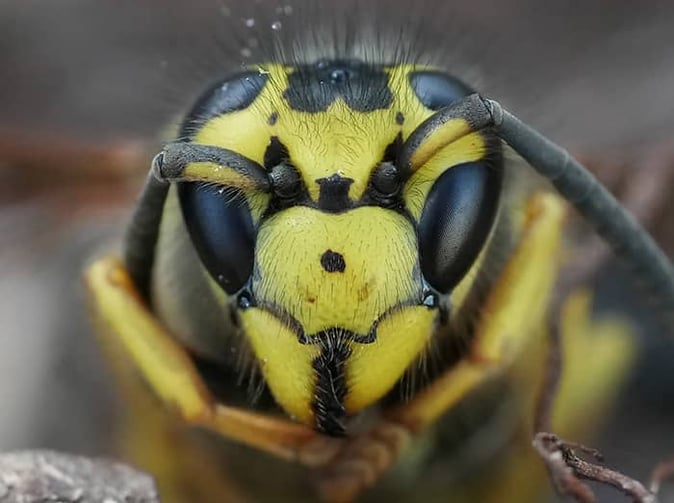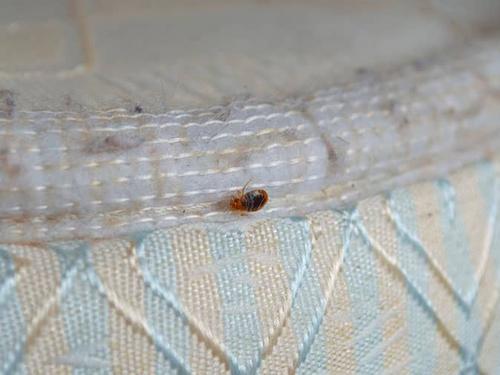What To Know About Yellow Jackets In Colorado
Finding a yellow jacket nest on your property can be more than just a nuisance; it can pose serious safety and health risks to you and your family, including your beloved pets. Yellow jackets are aggressive wasps that build nests in various locations, including the often-overlooked crevices of stone walls. In this comprehensive guide, we will explore everything property owners need to know about yellow jackets in Denver, Boulder, Colorado Springs, and Loveland, as well as throughout NoCo, including their seasonal behaviors, common nesting sites, and how to prevent and manage these stinging pests.

Understanding yellow jackets
Yellow jackets are a type of wasp with distinctive black and yellow striped bodies. They are social insects, meaning they live in colonies that can become quite large by the end of summer. Yellow jackets can sting multiple times and are particularly aggressive when their nests are threatened.
Yellow jackets are scavengers attracted to food, sugary drinks, and garbage. They are known for their painful stings and can become more aggressive as the season progresses.
These insects do have a couple of redeeming qualities. For instance, yellow jackets are predators that feed on other insects, like flies and spiders. Although they cannot compare to honeybees, yellow jackets contribute to pollination.
Seasonal behavior of yellow jackets
Yellow jackets have a well-defined seasonal cycle that influences their behavior and nesting habits. Let’s examine each season.
- Spring
As the weather warms up in Colorado, queen yellow jackets emerge from hibernation and search for suitable nesting sites. During this time, they start laying eggs that will hatch into the first generation of worker wasps. - Summer
When summer arrives, it’s full steam ahead. Yellow jacket colonies rapidly expand as the workers forage for food and care for the growing brood. Nests can become quite large, with thousands of wasps living in a single colony. This is when you are most likely to encounter them. - Fall
In the fall, the colony reaches its peak size. Yellow jackets become even more aggressive as they search for food to sustain the new queens and males. As temperatures drop, the workers die off, but the fertilized queens hibernate to start new colonies in the spring. - Winter
During the winter, yellow jackets are not active. Only newly mated queens survive the cold months, hibernating until spring when they will start the cycle again.
Common yellow jacket nesting sites
When yellow jackets choose their nesting sites, they do so with safety and survival in mind. You see, these stinging insects look for spots that offer protection from predators and environmental factors. That’s not all, though- they also want to be close to food sources, and the more, the better.
Common nesting sites include:
- Underground
Abandoned rodent burrows, holes, and other underground locations are perhaps these insects' most popular nesting sites. - Stone and brick walls
The crevices and cavities in stone foundations or between bricks are ideal nesting sites. These areas provide protection and seclusion for the colony. - Inside homes
Nests are often in attic spaces and wall voids, which can go unnoticed until the colony becomes large. - On the outside of homes
Yellow jackets frequently build nests in the eaves of houses. They may also nest in the voids behind the siding of homes and buildings.
Other noteworthy stinging insects in Colorado
While our article is focused on yellow jackets, they are not the only stinging insects in Colorado. The Rocky Mountain State is home to several other stinging insects that can pose problems, including:
- Hornets
Just as yellow jackets are known for their aggression, bald-faced hornets can be pretty hostile, especially when defending their aerial nests. They are mostly black but have white or ivory-colored markings on their faces and other parts of their bodies. - Paper Wasps
Paper wasps are slender insects with long legs and elongated bodies. Though they vary by species, they are typically brown or reddish with yellow markings. - Mud Daubers
These solitary wasps are black and yellow, have thread-like waists, and are not aggressive. - Honey Bees
Honey bees are small to medium-sized insects with smooth, shiny, golden-yellow, and black-striped bodies. They are generally less aggressive but can still sting if provoked. Honey bees are essential pollinators but can be a nuisance if their nests are in or near your home.
How to prevent yellow jackets from stinging and nesting
Preventing yellow jackets from nesting on your property and avoiding stings requires some forethought and a bit of elbow grease on the homeowner's part.
- Inspect your home for any gaps or cracks in your foundation, walls, and roof eaves. Seal these entry points to prevent yellow jackets from building nests inside.
- Knock down the beginnings of new wasp nests. DO NOT go near well-established nests. DIY wasp control can be hazardous.
- Keep your outdoor living spaces clean and free of food, drink containers, and other garbage that might attract yellow jackets. Be especially cautious during outdoor activities and picnics.
- Cover trash cans to prevent wasps from “dumpster diving” in search of food waste.
- Before you head outdoors, look at your clothing. Yellow jackets are attracted to brightly colored or floral-patterned clothing.
- Reconsider perfumes and scented lotions if you plan to spend time in an area with yellow jackets. These insects are also attracted to scents.
What to do if you’re stung by yellow jackets
If you or someone else is stung by a yellow jacket (or other stinging insects), it is important to monitor the symptoms and seek medical attention if necessary.
- Immediately wash the sting site with soap and water to reduce the risk of infection.
- Use a cold pack to alleviate pain and reduce swelling at the sting site.
- Apply antihistamines and hydrocortisone creams to relieve itching and inflammation. Of course, be sure to check with your doctor about what to take; we’re not medical experts, after all.
- If you experience severe reactions, such as difficulty breathing, swelling beyond the sting site, or dizziness, seek medical help immediately.
Contact EnviroPest for effective wasp control
Yellow jackets can be a significant problem, especially if they nest near or inside your home. By understanding their behavior, knowing where they like to nest, and taking preventative measures, you can protect your property and reduce the risk of stings. However, if you find a yellow jacket nest or encounter these stinging insects too close for comfort, contact EnviroPest immediately.
We offer year-round home pest control services that target wasps and other pests that frequently infest homes and yards in our Colorado service area. For ongoing protection from nuisance and potentially harmful pests, you can depend on the team at EnviroPest; reach out today!

Testimonials
GETTING STARTED IS AS EASY AS 1-2-3
REQUEST FREE ESTIMATE
Pest Solutions For Homes & Businesses
We understand that pest problems can be unsettling and frustrating, but the solution shouldn't be. For over 55 years, we've been helping folks right here in Colorado take care of ants, spiders, mice, mosquitoes, wasps, bed bugs, bats and most other creepy crawly things. We'll get there fast to solve the issue quickly and affordably - Guaranteed.



